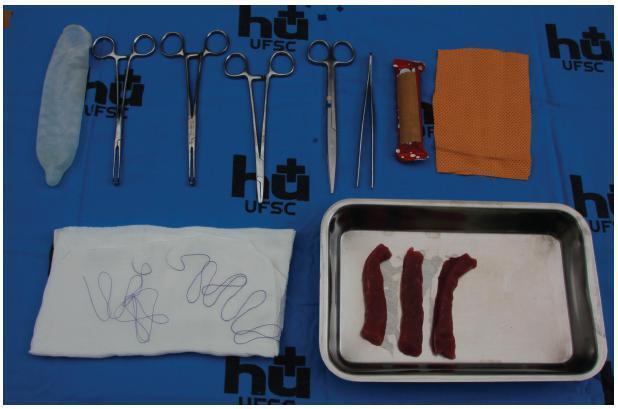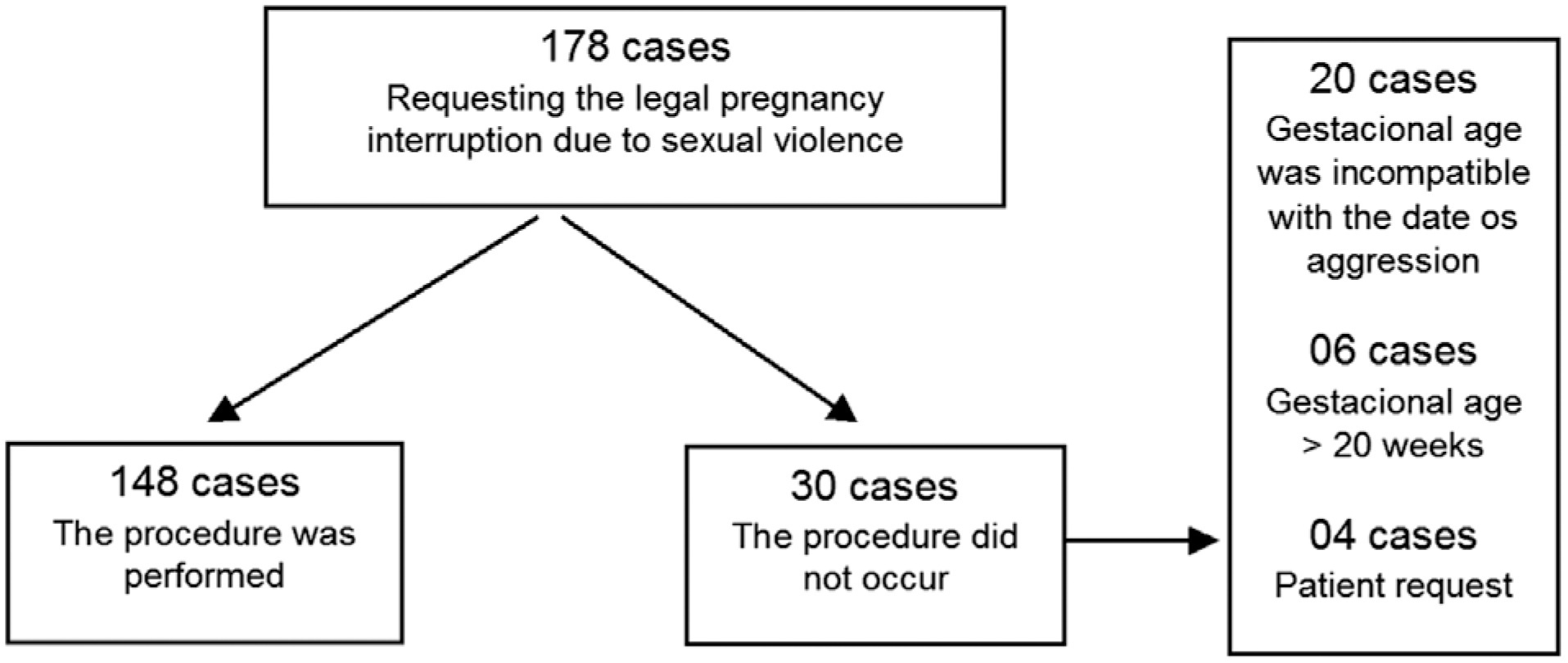You searched for:"Alberto Trapani Júnior"
We found (12) results for your search.Summary
Rev Bras Ginecol Obstet. 2018;40(8):465-470
To describe and evaluate the use of a simple, low-cost, and reproducible simulator for teaching the repair of obstetric anal sphincter injuries (OASIS).
Twenty resident doctors in obstetrics and gynecology and four obstetricians participated in the simulation. A fourth-degree tear model was created using lowcost materials (condom simulating the rectal mucosa, cotton tissue simulating the internal anal sphincter, and bovine meat simulating the external anal sphincter). The simulator was initially assembled with the aid of anatomical photos to study the anatomy and meaning of each component of the model. The laceration was created and repaired, using end-to-end or overlapping application techniques.
The model cost less than R$ 10.00 and was assembled without difficulty, which improved the knowledge of the participants of anatomy and physiology. The sutures of the layers (rectal mucosa, internal sphincter, and external sphincter) were performed in keeping with the surgical technique. All participants were satisfied with the simulation and felt it improved their knowledge and skills. Between 3 and 6 months after the training, 7 participants witnessed severe lacerations in their practice and reported that the simulation was useful for surgical correction.
The use of a simulator for repair training in OASIS is affordable (low-cost and easy to perform). The simulation seems to improve the knowledge and surgical skills necessary to repair severe lacerations. Further systematized studies should be performed for evaluation.

Summary
Rev Bras Ginecol Obstet. 2015;37(12):593-597
DOI 10.1590/S0100-720320150005455
Pregnancy and puerperium are periods of blood hypercoagulability and, therefore, of risk for thromboembolic events. Renal vein thrombosis is a serious and infrequent condition of difficult diagnosis. This study reported a case of renal vein thrombosis in the puerperium, and described the clinical case, risk factors, diagnostic methods, and treatment instituted.

Summary
Rev Bras Ginecol Obstet. 2017;39(12):653-658
To identify the prevalence of pyelonephritis during pregnancy and to analyze the clinical and laboratorial aspects, perinatal results and complications.
A transversal study of 203 pregnant women who had pyelonephritis during pregnancy and whose labor took place between 2010 and 2016 at a hospital in the state of Santa Catarina, Brazil. The analysis was based on medical records as well as on the hospital’s database. Clinical and laboratory conditions, antibiotics, bacterial resistance, perinatal outcomes and complications were all taken into account. The data was compared using the Mann-Whitney test and the Chi-square test.
A prevalence of 1.97% with pyelonephritis was evidenced, with most patients having it during the second trimester of gestation. The bacteriamost commonly found in the urine cultures was Escherichia coli, in 76.6% of cases, followed by Klebsiella pneumoniae (8.7%). Ceftriaxone had the lowest bacterial resistance (only 3.5% of the cases). On the other hand, ampicillin and cephalothin presented higher bacterial resistance, 52% and 36.2%, respectively. The risk of very premature delivery was more than 50% higher in patients with pyelonephritis.
Ampicillin and first-generation cephalosporins are associated with a higher bacterial resistance while ceftriaxone proved to have a high efficacy for the treatment of pyelonephritis due to low bacterial resistance. Patients with pyelonephritis showed a higher risk for very premature delivery (< 32 weeks). In this casuistry, there were no others significant differences in the overall perinatal outcomes when compared with the routine service series.
Summary
Rev Bras Ginecol Obstet. 2022;44(10):945-952
To analyze the cases of all women who attend to a service of legal termination of pregnancy in cases of sexual violence in a public reference hospital and to identify the factors related to its execution.
Cross-sectional observational study with information from medical records from January 2014 to December 2020. A total of 178 cases were included, with an evaluation of the data referring to the women who attended due to sexual violence, characteristics of sexual violence, hospital care, techniques used, and complications. The analysis was presented in relative and absolute frequencies, medians, means, and standard deviation. Factors related to the completion of the procedure were assessed using binary logistic regression.
Termination of pregnancy was performed in 83.2% of the cases; in 75.7% of the cases, the technique used was the association of transvaginal misoprostol and intrauterine manual aspiration. There were no deaths, and the rate of complications was 1.4%. Gestational age at the time the patient's sought assistance was the determining factor for the protocol not being completed. Pregnancies up to 12 weeks were associated with a lower chance of the interruption not occurring (odds ratio [OR]: 0.41; 95% confidence interval [CI]: 0.12–0.88), while cases with gestational age > 20 weeks were associated with a greater chance of the interruption not happening (OR: 29.93; 95%CI: 3.91–271.50).
The service studied was effective, with gestational age being the significant factor for resolution.
